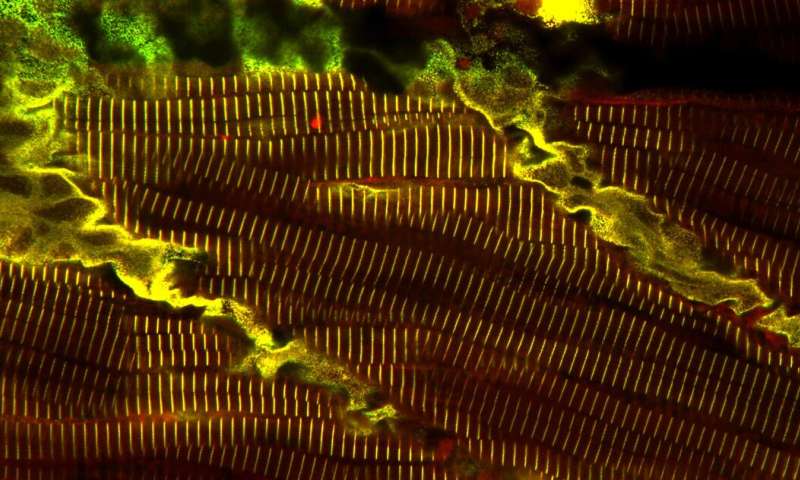
Stephen Greenspan and Laura Zah were devastated when they learned their son Alexander had a rare genetic mutation, which causes a deadly neuromuscular disease with no known treatment or cure.
But the results of an international study published today in Autophagy and led by researchers from Monash University, School of Biological Sciences, provides renewed hope for children suffering from the progressive and devastating muscle disease. Known as myofibrillar myopathies, these rare genetic diseases lead to progressive muscle wasting, affecting muscle function and causing weakness.
Using the tiny zebrafish, Associate Professor Robert Bryson-Richardson from the School of Biological Sciences and his team of researchers were able to show that a defect in protein quality control contributes to the symptoms of the diseases.
“We tested 75 drugs that promote the removal of damaged proteins in our zebrafish model and identified nine that were effective” explained first author Dr. Avnika Ruparelia, who completed her student and post-doctoral training in the team working on the disease. “Importantly two of these are already approved for human use in other conditions.”
“We found that one of the drugs, metformin, which is normally used to treat diabetes, removed the accumulating damaged protein in the fish, prevented muscle disintegration and restored their swimming ability,” said Associate Professor Bryson-Richardson, who led the study.
The most severe form of the myofibrillar myopathy, caused by a mutation in the gene BAG3, starts to affect children between six and eight years of age. The disease is usually fatal before the age of 25 due to respiratory or cardiac failure.
In the case of Alexander (who was born in 2003) clinicians were able to draw on the study’s information to prescribe metformin—which is so far proving positive.
“Initially, we were devastated by our son’s diagnosis. Alexander has a rare mutation that causes a deadly neuromuscular disease. No treatment or cure was known. In desperation we formed the charitable organization, Alexander’s Way, to promote and sponsor research into this disease. Upon learning of our awful problem, A/Prof Bryson-Richardson was compassionate, and found a way to share with us his pre-publication results about the disease and metformin. The research conducted by Robert Bryson-Richardson and Avnika Ruparelia has given us hope, and we thank them deeply for their work and compassion,” said Alexander’s father, Stephen.
“This is a wonderful outcome, as initially we thought that because of the rarity of the mutation, it was unlikely that there would ever be a treatment or therapeutic intervention available,” said Alexander’s mother, Laura Zah. “Compared to previous case studies, the progression of our son’s disease has been slower, likely due to metformin. Another boy, Marco, who is affected by this disease also takes metformin, and is presently judged by his mother to be stable. Metformin may have given us more time with our boys and more time to work for a cure.”
Associate Professor Bryson-Richardson said the repurposing of existing drugs provided a very rapid route to clinical use, as there was already existing safety data for the drug. This is especially important for these rare diseases as the patient numbers are low, meaning it might not be possible to do clinical trials with novel drugs.
“We have identified metformin as a strong candidate to treat BAG3 myofibrillar myopathy, and also myofibrillar myopathy due to mutations in other genes (we showed similar defects in protein quality control in three other forms) and in cardiomyopathy due to mutations in BAG3,” he said.
“Given that metformin is taken by millions of people for diabetes and known to be very safe this makes clinical translation highly feasible, and in fact many patients are now taking it.”
Stephen and Laura Zah are the founders of the charitable organization Alexander’s Way Research Fund which they established to promote and sponsor research into myofibrillar myopathies.
Source: Read Full Article
